Pernille Ripp's Blog, page 8
April 21, 2021
#PernilleRecommends – My Favorite Books January through April, 2021
If you follow me on Instagram, you may know that I recommend a lot of books on there, in fact, it is the number one thing I use my account for. Perhaps you follow me there? If you don’t, or if you missed some, I figured a blog post to pull them all together would be helpful. That way you can see what I have read and loved, see what age groups they may work and order some books yourself. I don’t post all of the books I read, just the ones I love so much that I want to share them with others. I use the hashtag #pernillerecommends and they get cross-posted to Twitter as well if you want more than 1,000 book recommendations. Either way, here are the books I loved and shared from January until today!
Picture Books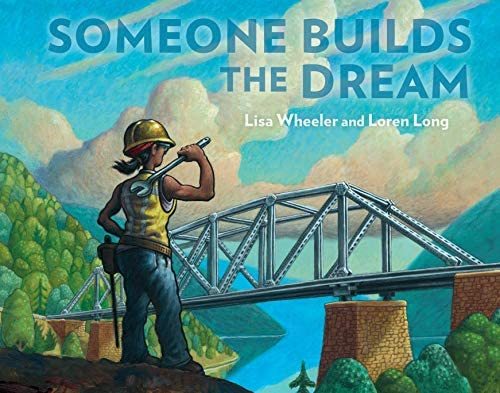


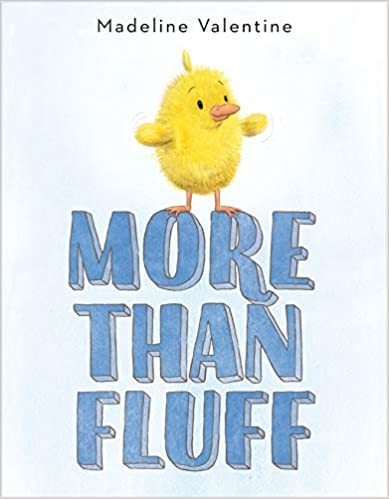

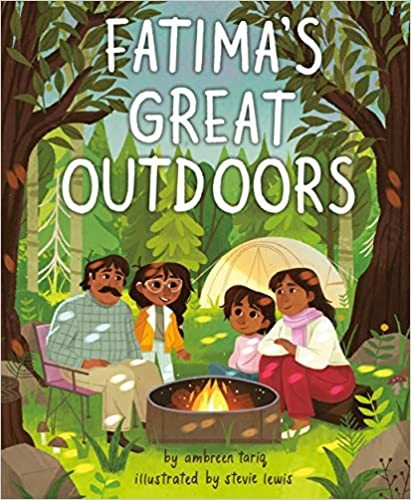




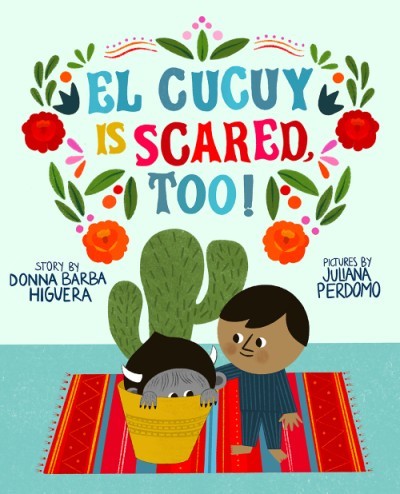

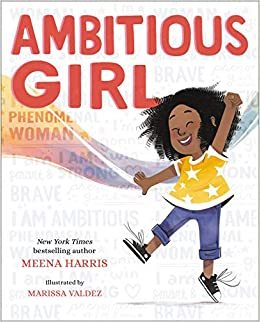
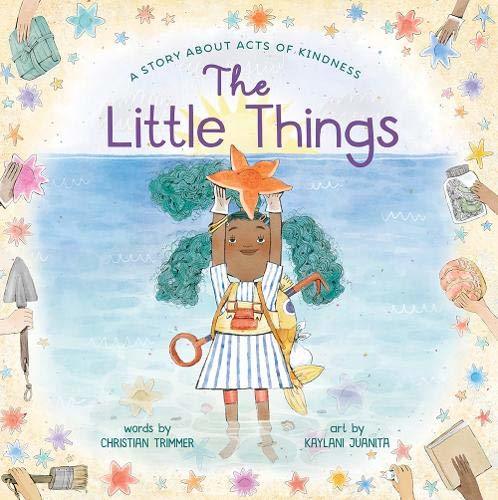 Pre-order for April 27th!
Pre-order for April 27th!
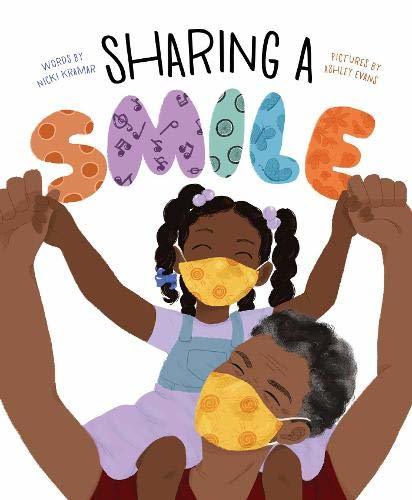

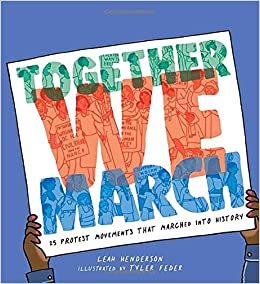


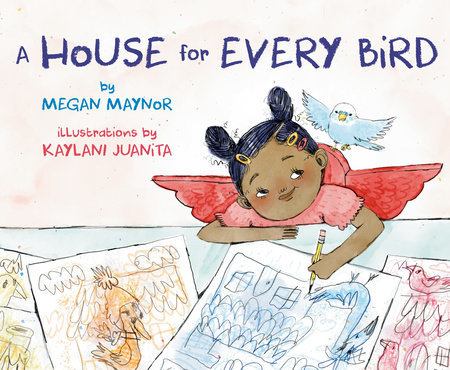


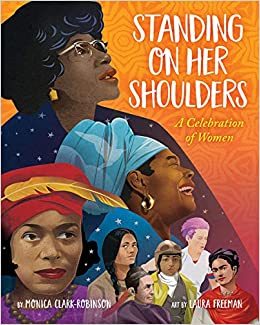



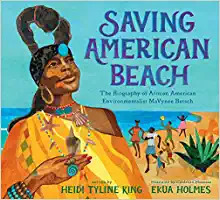

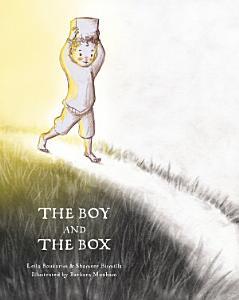



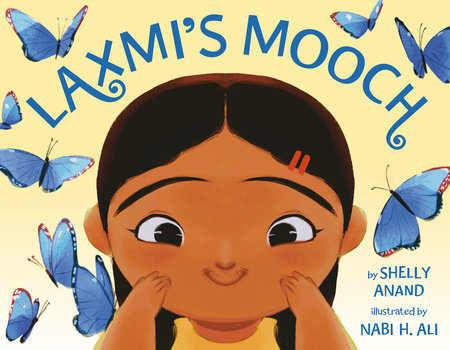






Pre-order for May 4th!
 Pre-order for November 2nd!
Pre-order for November 2nd! Pre-order for July 6th!
Pre-order for July 6th! Pre-order for September 21st!
Pre-order for September 21st!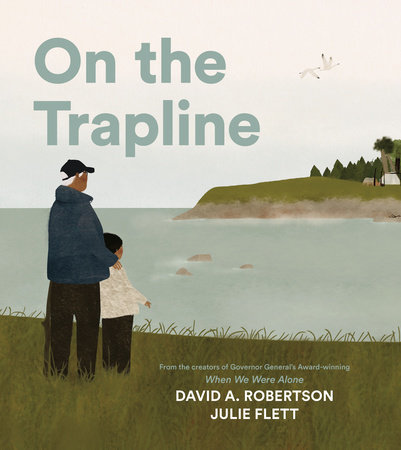 Pre-order for May 4th!Early Readers
Pre-order for May 4th!Early Readers 

 Global Read Aloud 2021 choice!Middle Grade
Global Read Aloud 2021 choice!Middle Grade
 Could also be used with early readers
Could also be used with early readers


 Middle School Global Read Aloud Choice 2021!
Middle School Global Read Aloud Choice 2021!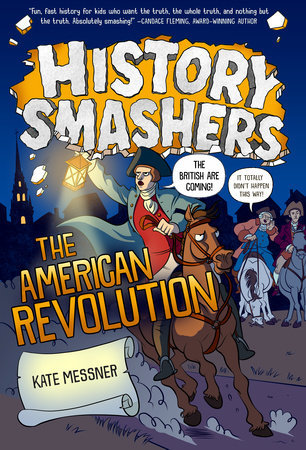
 Global Read Aloud Choice 2021!
Global Read Aloud Choice 2021!

 Pre-order for June 8th!
Pre-order for June 8th!
 Could also be used for early readers
Could also be used for early readers
 Could also be used for early readers
Could also be used for early readers

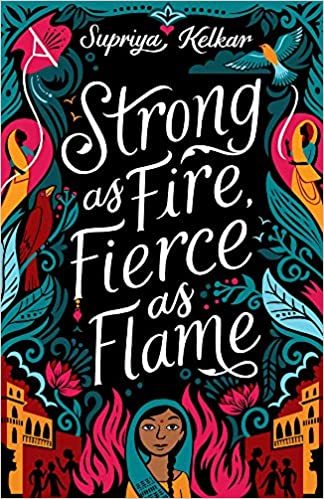
 Young Adult
Young Adult 
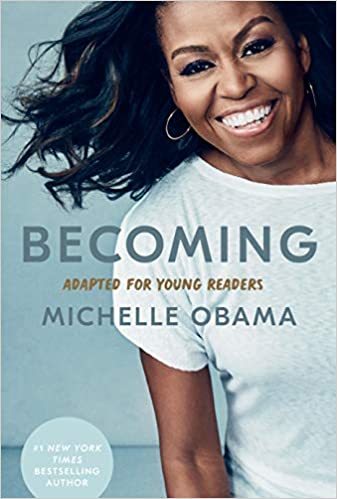
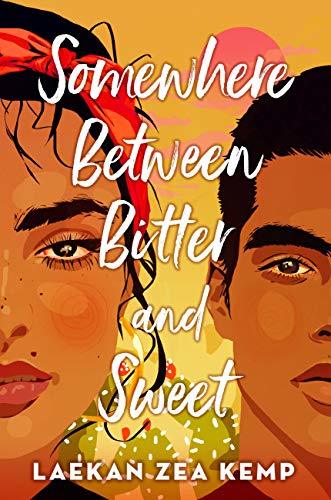
 The best book I have read so far this year.
The best book I have read so far this year.




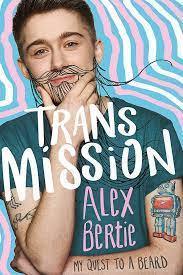








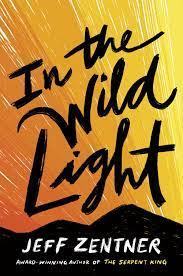 Pre-order this thing of beauty now – it is incredible!
Pre-order this thing of beauty now – it is incredible!



Wow, what a lot of incredible reading! I am so thankful for all of the creators who continue to give us opportunity for great moments and memories.
As always, I am also curating lists on Bookshop.org – a website who partners with independent bookstores to funnel book purchases through them, if you use my link, I get a small affiliate payout.
I am excited to be heading out on the road again to be with other educators in-district or at conferences, while continuing my virtual consulting and speaking as well. If you would like me to be a part of your professional development, please reach out. I am here to help.
April 14, 2021
To All the Tired Educators
Dear Pernille, and perhaps so many others
You have been losing a lot of sleep this past year. The world has felt so heavy, so hard at times, and when you finally have found your stride, life has thrown yet another turn your way. Events that will shape you the rest of your life, experiences that are being lived through that will follow you until the end.
You have worked too much, you have tried to create boundaries as well as anyone else, and yet you have felt the insatiable hunger of failure nipping your heels every day, haunting your every decision. Never enough. Never good enough. You have felt like the role of teacher came first, above mom, above wife, above person. You have stayed up too late, gotten up too early, pondered and wondered, sought out idea upon idea in an effort to continue all of the dreaming that shapes the classroom community you build every year with your students. And you have looked at the constraints and tried to plan your way through them, busting the chains of the old ways that have stood in your path, getting tangled up in obstacles unforeseen, expanding energy quicker than you could replenish it.
And now you face the creeping end of the year and you hear the whispers of learning loss, of failed year, of not enough so loudly they feel like drums beating a new path ahead. They drown out the voices of the educators who innovated, who created, who invented and rose to the occasion. Of the kids who met us in the pursuit of learning despite all of their obstacles. Of the home adults who kept trying no matter their own circumstances. Do not listen to them. This past year was not lost. The moments we have lived through, the experiences we have created, the learning that has happened has transcended what we thought was possible. We did the impossible, we did it, despite everything in our way.
Because this year the learning was perhaps not as much in the standards. It was perhaps not as much in the pages of textbooks. Perhaps it looked nothing like we had ever tried before. It was a year of navigating new. Of hearing the words “unprecedented” and “Covid” too many times. A year of figuring out how to connect through screens and distance. Of asking kids to tune in when their reflexes were to tune out. Of asking ourselves to try again when we were beyond exhausted. Of sending one more email, making one more phone call, of showing up and trying again.
It was in living through experiences that will help these incredibly resilient kids for years to come, will help us, the school staff who kept trying for years to come; how to problem-solve technology, how to advocate, how to manage time, how to learn independently, how to chunk out assignments, how to get the help deserved and needed. How to recognize what is the most important in everything we do; not the content but the kids, not the grades but the growth. It was in showing up in whatever capacity we could despite everything that stood in front of us. It was in digging in even after the energy was depleted. In not painting a year in failure before it had even begun.
Because there were many who wanted us to fail. Who told us that the only way to do school was the ways we had done it for hundreds of year, a way that has failed so many before. There were many who couldn’t wait to tell us how this would never measure up, how this would never be enough. And yet we came, we worked, and we kept trying long after our contract hours, long after our energy had left.
So dear Pernille, you have to let the whispers of failure go. You have to rise from the ashes of your own doubt, burn down the defeat and recognize the strength that you carry within you after the last 13 months. You have to look back at this year and see the small triumphs that have risen through the cracks. Not as an attempt to dismiss the things that didn’t work, the kids where traditional learning was put on hold, but to recognize that among the fires there were things that did succeed. That success is not just found in standards and grades, which you have known for so long, but in the small conversations, the openings into their lives, the bonds that have been formed no matter they had to work their way through. No matter how much you worried.
That you and all of the kids in your care did incredibly hard things. They spoke up when they would rather stay muted. They turned on their cameras even when they would rather have sat in the dark, they chatted when they could, they handed in what they could, they asked questions when they could and they hopefully recognized that every day, no matter how much work they did, they were cared for, they were accepted, and they felt safe.
Because what happened in the past year in education is so much bigger than just learning content. Is so much bigger than just one singular experience. It is about community. About innovating through unforeseen obstacles. About a relentless pursuit of connection, of seeing our own mistakes not as places to rest but places to grow. Of knowing that you did the best you could and that what we did mattered, that what you did mattered.
So celebrate these last few weeks. Revel in the kids and their amazing fortitude. Cherish the times that you still get to have with these incredible kids that you got to call yours for a while. And rest. Rest in the knowledge that you did it. That you worked through it. That you learned lessons you will use for the rest of your teaching career. Rest in the knowledge that there will be more learning and growing in years to come and that we did not get lost, we instead found a new path that we had to forge together and that the content and the skills is still on our path. We may just need a new way to get there.
Love,
Pernille
April 13, 2021
A Question to Center Reading Joy

I have been thinking a lot about reading experiences of kids lately. If you follow my writing, you know that this is something I think about a lot. Perhaps it is because I finally have big classes of kids in front of me rather than small cohorts. Perhaps it is because we have only 7 weeks left of the year and I feel the urgency of the mission we have been on all year to help kids change their relationships to reading. Perhaps it is because I am presenting on this topic around the world and so I keep thinking of what else we should discuss about it, what else we can do to potentially change the narrative that seems to be repeating itself this year despite our best intentions.
Because I see a lot of kids not reading. I see a lot of kids disengaged from reading. I see a lot of kids who don’t see reading as something valuable or even something they have want to spend time doing. And I see a lot of adults not quite sure how this keeps happening despite everything we are trying.
So perhaps, this post is a way to remind myself to take a deep breath, perhaps it is an offer to us all to rethink the dialogue that surrounds kids’ reading lives. Perhaps this is a reminder to those who need to hear it that this disconnect between books and readers is one we have been working through for a long time, one that we will continue to work through for a long time, and it also didn’t just happen because of the pandemic. And that there are things we can do but that sometimes we create obstacles that we can’t even see, we don’t recognize the long term consequences of short-term ideas.
I could blame previous curricular decisions, after all, wouldn’t we all like to assume that it is solely because of the decision some other teacher made that created the readers we have. And yet, when we do that, we don’t see our own part in this either. We don’t see how we often have to interrogate, audit, and change an entire system rather than just one teacher. It is too easy to blame one year or one experience for killing the love of reading. When we get stuck there, it does us no good, it doesn’t allow us to see past those small decisions and instead focus on the entire experience. It doesn’t allow us to see that perhaps the whole system we function in needs to be aligned and adjusted. That what we see as “okay” may not be at all.
So instead, I would offer up that we use our worry about kids and their relationships to reading to urge us forward. That we start to invest in long-term solutions, discussions, and curricular choices that offer up an opportunity for all kids to connect or re-connect with reading year after year. That we shift the focus from what one teacher can do to what an entire system can take on. That we recognize that to center reading joy is not just the work of one, but the work of many, and that kids need more than one great teacher urging them to read.
And that starts in conversation rather than reading logs. That starts in meaningful work rather than computer quizzes. That starts with making space and time for kids to explore the parts of their identity that is tied in with reading and asking them how they ended up where they are. That starts with recognizing what the reading rights are of all kids, not just the ones we get to teach on a daily basis and then wonder how the experiences they are all guaranteed shape their readerly lives or not.
And so we must put our emotions aside for a bit in order to step into these conversations, to recognize that everything we do should be put on the table in order for us to weigh what may work for all kids. What should be instituted on a whole-school or all-district schedule.
It means that we offer space to think and then space to do. That reflecting on the journey we are on becomes a part of the curriculum, even when we feel pressed for time like this year. That we listen to student voices and have them move us into action. That we consider the weight of their words as we plan for future units and experiences and not just assume that we know what they need or even what they want.
The work of creating joyful reading experiences centered in powerful instructions, access to books, free choice of independent reading books, culturally relevant teaching and ongoing conversations should not and cannot fall on the shoulders of just one teacher. We are not enough, the year we may have with students is not enough. It has to be a whole district or at the very least a whole school conversation and plan.
So where do you start? We start with one single question to guide our work; what are the reading experiences EVERY child is guaranteed in our care. We lay it all out on the table in order to constructively look at what the reading experiences are for every child no matter the reading experience and skills they have had before this year. We truthfully recognize what often happens when a child is identified as being behind in whatever scope the data says and how often that impedes the choices they get to make throughout their day and even the joyful reading experiences they get to be a part of. And then we fight to give them access. We fight to give them equality in their reading experiences and we monitor what happens to the kids in our care.
And we cannot do that work without listening to the voices of our students, without asking the home adults what they see happening while we have kids in our care. We cannot do this work without revisiting the question again and again to re-align and readjust. Without truth, courage, and a recognition that sometimes our best ideas are not the ideas that should continue on.
It takes humility, patience, and toughness to do this work. Our students deserve that their experiences are carefully constructed around choice, around freedom, around receiving the care they absolutely deserve. We can do it and it starts with a conversation and it continues with a commitment.
I am excited to be heading out on the road again to be with other educators in-district or at conferences, while continuing my virtual consulting and speaking as well. If you would like me to be a part of your professional development, please reach out. I am here to help.
April 3, 2021
But What Happens to Our Readers – On the Unintended Impacts Computerized Reading Programs Can Have on the Development of Readers

I have never worked through so many changes in my educational model as I have for the past year. COVID teaching has pushed us all to the max, not just with what we are expected to do but also in how we are supposed to adapt to whatever ideas, programs, and decisions that come our way. It has been thrilling some days to invent and re-think at such a rapid pace, but many other days it has been exhausting. I have felt like a fraud on more days than I can count, a terrible teacher too. And yet, a year into this COVID teaching, I can also start to look back and ponder what the long-term effects are going to be on our instructional model. What will stick around from all of our innovations and what will disappear?
One of the components I worry about is the increase in the use of computerized programs to teach children especially in teaching reading. I have seen these programs play out in our kids’ lives as our 7- and 8-year-olds all spend more than an hour and a half a day in a variety of computer programs; Lexia, Dreambox, Smarty Ants, Raz Kids all expected to be done every day. The programs are woven in throughout their curricular day, used as a way for their teachers to do small group lessons and other supported work, and yet despite our best explanations, our own kids don’t care. They beg us to let them skip the programs, asking us if they can please just read a book instead, do a math workbook. “I will do whatever you say, mom, just please not that… ” is an often heard refrain in our house.
My kids are not alone in the change of their programming, in many districts around the US at least, teachers have been asked to implement new self-paced computerized teaching programs in order to close the opportunity gap, to stop “learning loss,” and to continue to engage all learners no matter our proximity. I can see the appeal of these programs easily; it allows us to place kids at their prescribed level and the computer does all the work as far as which lessons they should be invested in. It provides us with more data and hopefully allows our students to develop further skills that they may otherwise not have mastered yet. It is one more tool as we work on the opportunity gap for all of our kids. It is one more way to engage kids and to keep them learning, even when a global pandemic stopped us from sitting right next to them, stopped us from so many educational opportunities.
And yet, as always, I wonder about the unintended consequences of our new implementation of so many programs, many of them focused on developing reading skills. How will these computer programs affect the reading identities that we are so carefully developing with our kids? How will a computer care for them as human beings and not just participants in a program, (hint; it often won’t)? Because I see it play out in my own house, as well as with my own students. I hear it from teachers who wish they would have funding for books but are told there is none and yet are asked to use these programs which we know all come with a hefty price tag. I see it when my own kids would rather lie to me about whether or not they have done their Lexia minutes, knowing I will get a report from their teachers when they haven’t, than actually do it.
And so I wonder if we are checking in with the children who are asked to use these programs and how these programs are affecting their already tenuous relationship to reading and to being a reader. I cannot speak about any other kids than the ones I teach and the ones I raise but the impact of reading-focused computerized programs have been deeply felt by many of them; they often hate them, they fight every step of the way when asked to do them, they see no purpose for the programs other than to punish them. To remind them that they are lesser readers than their peers. They are exhausted by the screen and by the questions so much so that when I ask them to please find a book, they don’t want to. That they would rather put their head down, leave the room, or argue than actually invest into the work we do with reading outside of the computer. So these curricular choices are making the work that we are trying to do with them as far as wanting to pick up a book on their own, wanting to invest into an emotionally fraught reading journey and change their relationship to reading to something more positive, even harder. And that cannot be dismissed as a trivial side effect.
If we look at the research that surrounds reading enjoyment and motivation, we see a direct correlation between the effects of reading intervention programs and how kids feel about themselves as readers. They can do so much good but they can also do a lot of damage. Richard Allington and others remind us of the incredible impact the reading curriculum decisions have on our most vulnerable readers. That “the design of reading lessons differs for good and poor readers in that poor readers get more work on skills in isolation, whereas good readers get assigned more reading activity.” That our most vulnerable readers are “often placed into computer programs or taught by paras rather than placed in front of reading specialists. That their experience is fundamentally shaped around their perceived gaps rather than their full person. So how does that play out year after year when a child is not placed in front of a trained and caring reading specialist but instead of a computer that cares nothing about their reading identity or how hard they are working? How will it play out when kids only see their reading value in the points they get, the levels they pass, and the scores they receive? Not books read, not experiences created, not background knowledge developed, or small accomplishments celebrated.
These pandemic choices will have long-term impacts, and not always positive ones, on the kids affected, especially if we don’t revisit the choices we made in the past year. What may have worked while deep in pandemic teaching may no longer work when we are back with students and again able to hand them books, teach them in small groups, and center our reading work not just on the skills they need to develop, but also who they are as readers. We must make space for both explorations within our curriculum.
I am not saying for these programs to never be used, at least not some of them, but I believe that we need to include the voices of the children who are being asked to use the program and to consider the unintended consequences that this program may be having for some of them. And also ask their families, if the school of my children school asked us, we would have plenty to say. As it stands, they haven’t, but we may just be speaking up anyway.
So what are the conversations we need to have? We need to move past the data and ask our students how our chosen programs affect them, whether they see them helping or hurting them, how we can make their experience better? How could we use a program without doing harm? How much time would they be willing to invest into a program if needed, what else we should do in our reading experiences. And we should ask the home adults and the teachers the impact they see the program having, negative or positive. And then we should listen, and then we should do something with what we are told.
All this to say, that as always, we need to speak up and make space for the voices we may have excluded. That it is easy to roll our eyes and vent behind closed doors, but that we must also find the courage to question the programs and decisions being made within our districts and within the lives of our own children. That while computerized reading programs may seem like the solution so many of us have been looking for when it comes to filling in knowledge gaps, that they may actually move us further from our goal of bolstering children who see themselves as readers outside of what school makes them do. We must remember that what may be viewed as a short-term gain may have unintentional long-lasting negative effects on the very kids we are supposed to be nurturing. After all, what does it matter if a child can read better but chooses to never read again due to their hatred of the tools we used to get them there? As Kamil reminds us, “Motivation and engagement are critical for adolescent readers. If students are not motivated to read, research shows that they will simply not benefit from reading instruction.” So how are we protecting and caring for their motivation and engagement? Because I don’t see many computerized reading programs doing that.
I am excited to be heading out on the road again to be with other educators in-district or at conferences, while continuing my virtual consulting and speaking as well. If you would like me to be a part of your professional development, please reach out. I am here to help.
March 12, 2021
Some Favorite Graphic Novels to Add to Your Middle School Collection
If you follow me on any social media platform, you hopefully know how much I love to share amazing book titles. For many years now, I have used this blog and other places to give recommendations, create book sets and lists and just in general share the love for all of the amazing books that are out there in the world. Doing this means that a lot of other educators ask me to share ideas for when they are filling their own classroom collections. This week, I was asked to share some of our favorite graphic novels for middle school, a format of books that my students and I love to read and thus have a lot of, so here you are. This list is by no means all of them, there are too many to share, but instead a snapshot of some of the most popular titles being read.
Some of the titles shared here are more mature reads for my 7th graders so as always read the books that you wonder about before placing them in your collection. Many of the ones shown here are books in a series and I would recommend the whole series.



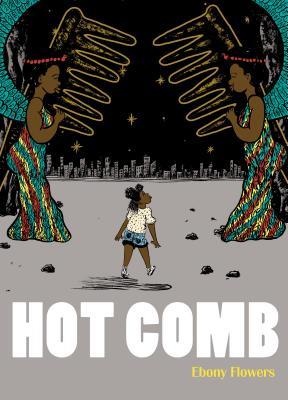









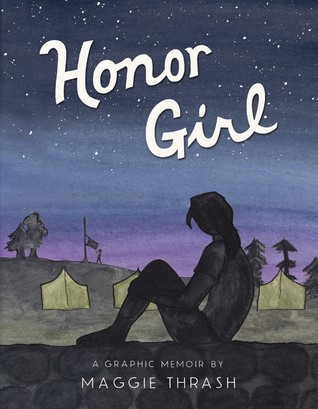






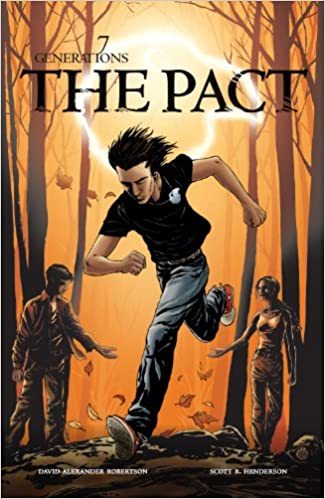


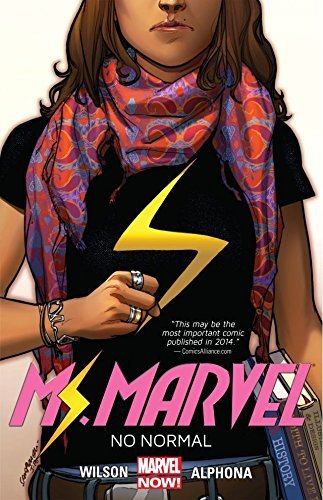
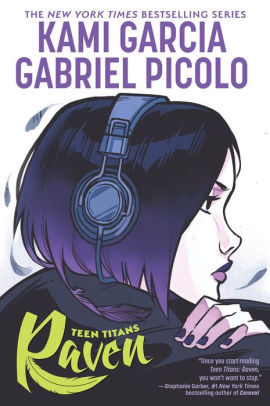

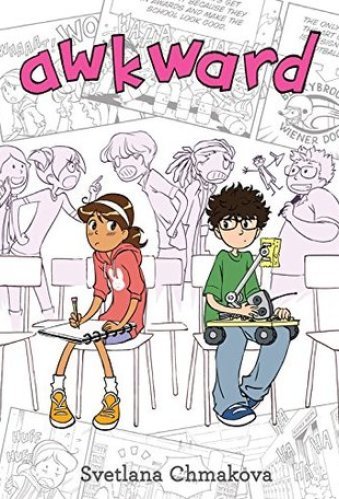
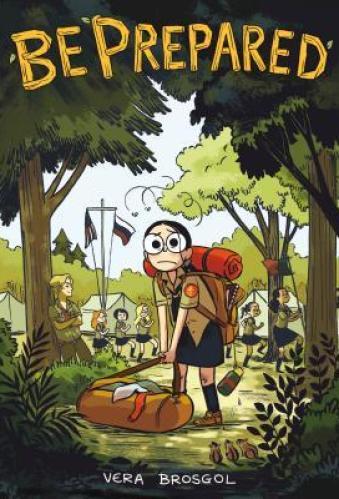


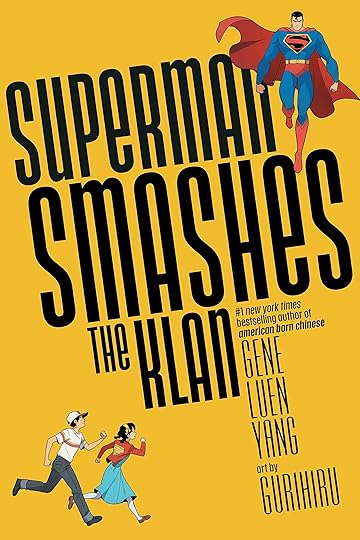



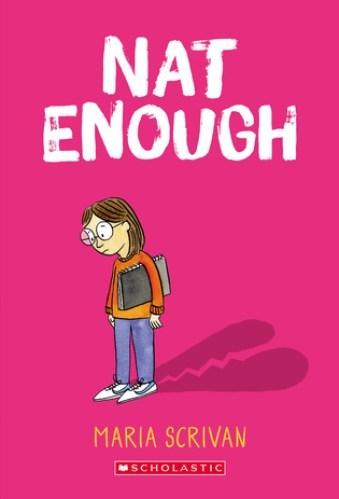
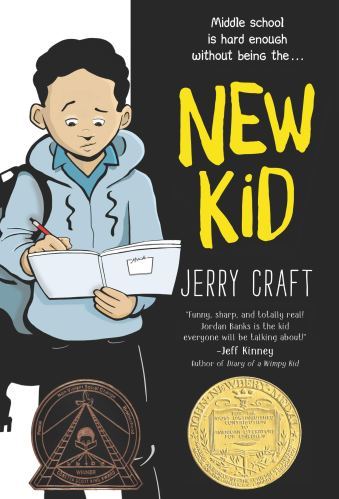
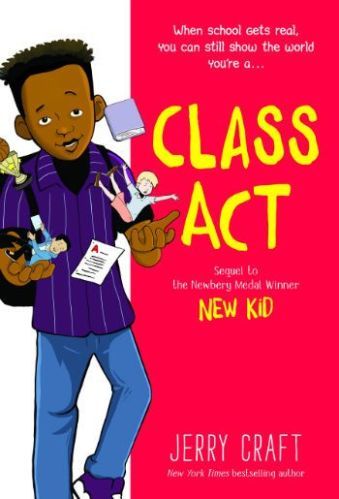

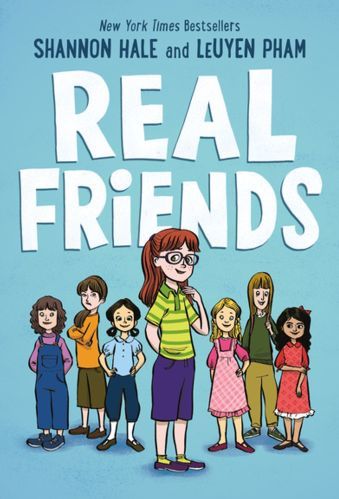
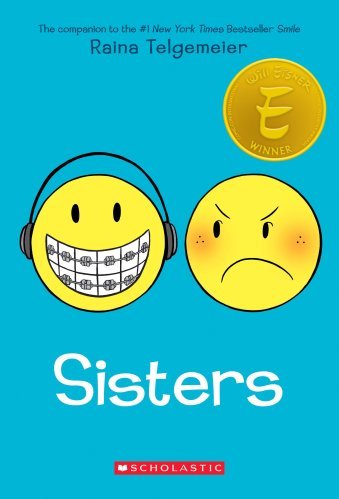
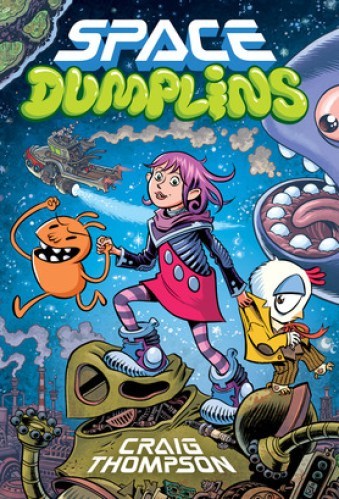
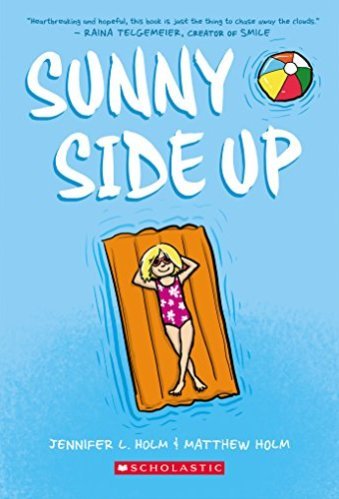
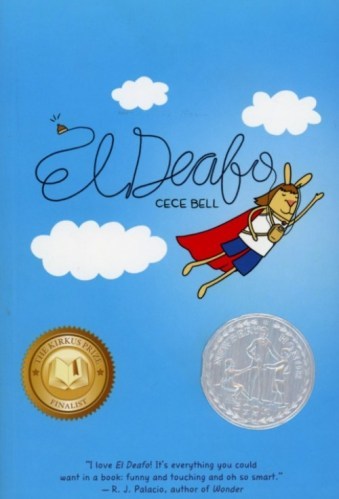
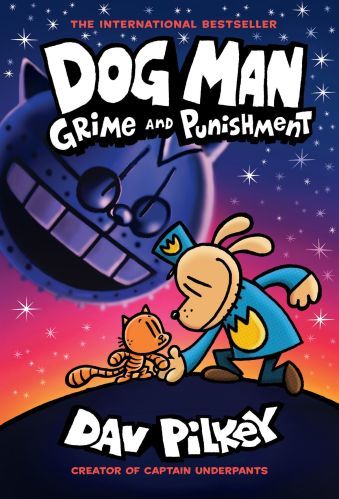
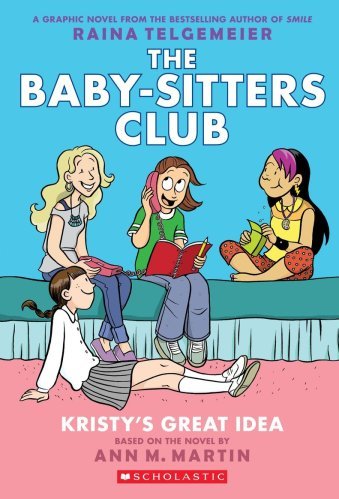
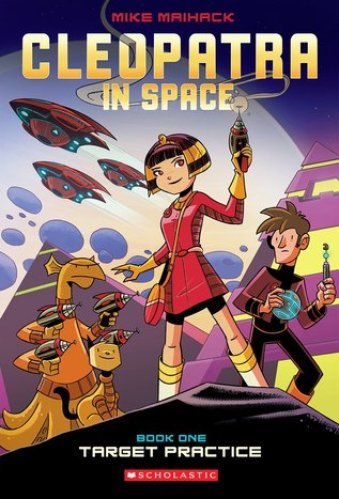
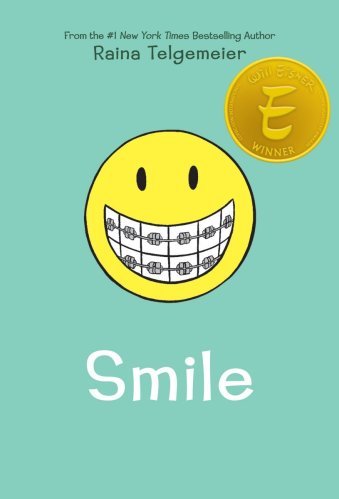

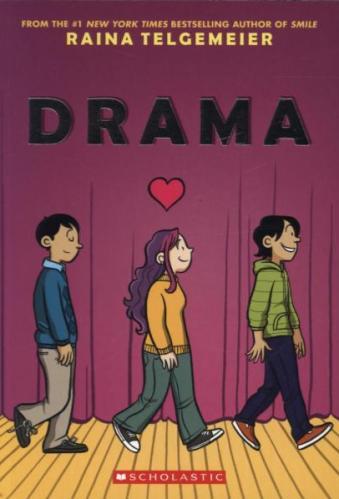
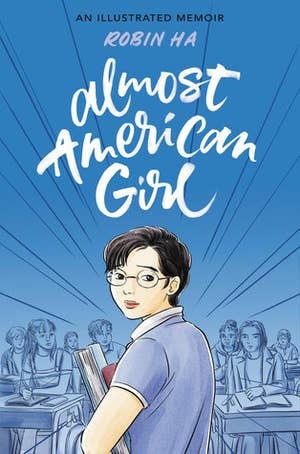
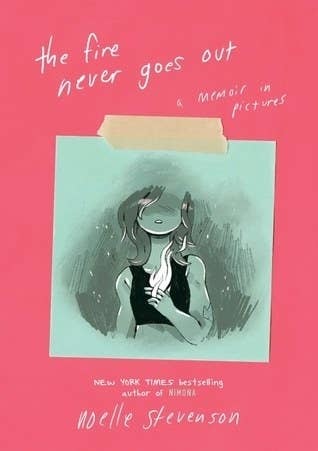
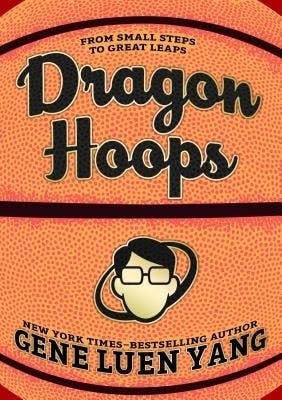
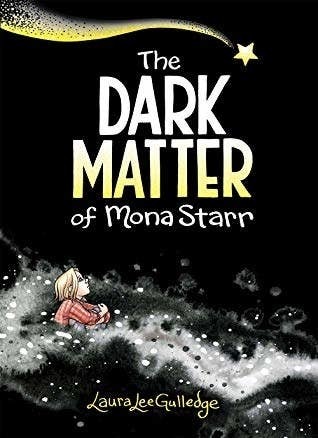


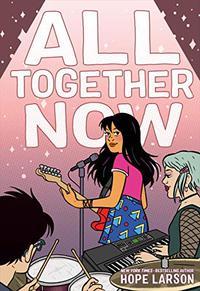




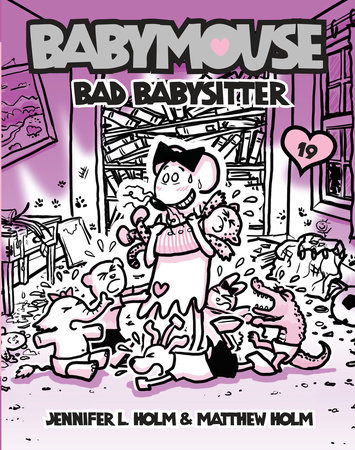







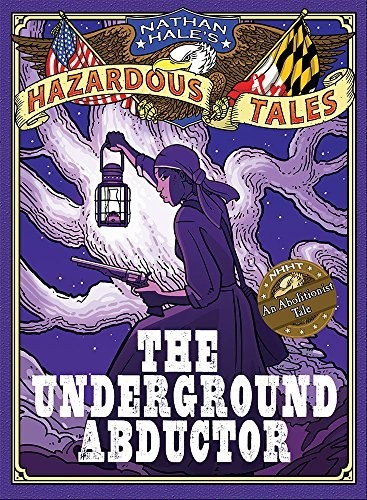


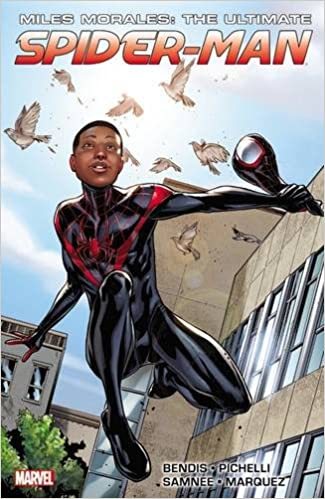
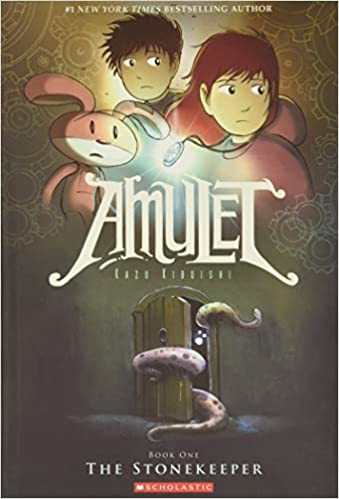
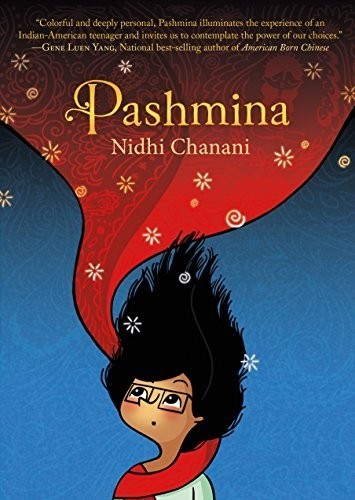
I hope you discovered some new or not so new graphic novels to add to your collection because remember, graphic novels are indeed real books and should be given the same respect as other books. And while I will gladly offer up suggestions for more, and will continue to share daily recommendations on Instagram, I will also give a few more tips…
Always ask your students what books they wish you had. I have gaps in my classroom collection that I am not aware of because it is not a genre I prefer to read, thus asking my students helps me create a collection of books they would love to read helps me create better reading experiences for all of them.Read your own library collection. I can speak books with my students because I read a lot of the same books. I am continually in awe over the incredible books created in the world.Know and use resources that post critical reviews of childrens’ books. I am eternally grateful for the hard work of so many such as the staff at the CCBC, the people who run Latinx in Kidlit, or The Brown Book Shelf, or those who run We Need Diverse Books, and the amazing creators behind American Indians in Children’s Literature to name just a few.I am excited to be heading out on the road again to be with other educators in-district or at conferences, while continuing my virtual consulting and speaking as well. If you would like me to be a part of your professional development, please reach out. I am here to help.
March 6, 2021
On “Easy” Books…Again

I have been thinking a lot about easy books. About our adult urges to steer kids into “better” books, harder books, away from all those easy books. Away from books with pictures, graphic novels, or topics we deem immature.
I have been thinking a lot about our well-meaning intentions and how they sometimes do damage that we are not even around to see because the real consequences of our gentle guidance actually steers a child away from reading altogether.
I have been thinking a lot about the collections of books we build, where our money is used, because often it is not so much into the books that kids actually want to read but the ones we hope they read. And how we then sometimes wonder why no one seems to want to read the books we have.
Why is it that we, the adults, who have the ability to shape the reading lives of our students into beautiful things sometimes get so lost in thinking of the future of our readers that we lose sight of the present? Don’t get me wrong, I want to do the best I can to create rich reading opportunities for all of my students but that also means that they need to want to read right now.
As so perhaps this reminder is more for myself as I feel the pressure to help these children grow as readers, perhaps this post is really just a re-commitment to the words I have spoken for so many years. Perhaps it is a reminder to the universe of what our gatekeeping of books can do for the lives of the readers we are entrusted with. Perhaps this is a reminder that when we decide that a child is reading too “easy” of books we are really dismissing the reading journey they are on. That in our quest to challenge our readers we sometimes lose sight of what they may need from their reading experiences right now, and that that perhaps is not harder vocabulary or more complex storylines but instead a chance to truly melt into a world and escape a little bit from the craziness of this one.
It is a question I am asked a lot when I coach and train other teachers; what about the kids who read books that are much too easy, how will we challenge them? The problem is implied; easy books don’t offer up real growth opportunities. Easy books don’t develop their skills. Easy books don’t push them forward in the ever-present journey toward becoming a better reader. Easy books means that they will never perform in a way that our standardized tests want them to do. And I hear the worry, the concern for their readerly lives, I see that the question is not asked out of an urge for censorship but instead from a place of care.
But it seems as if, in our well-meaning intentions, that we have forgotten what a better reader really is. A better reader is not just someone who can just tackle complex texts, who can comprehend at a deep level, who can answer the questions on the test to back up what we already knew. While those are aspects, they are not the only thing that makes a child a better reader.
A better reader is someone who sees reading as valuable. Who recognizes the need to read because they will feel less than if they don’t. Who sees reading as a necessity to learning, for themselves and not just for others. Who sees reading as a journey to be on, something worth investing in. That a better reader is someone who will continue to come back to reading when they can, finding value within whatever materials they read in order to make their lives better in some way. A better reader is not just a child who reads hard texts, always pushing their skills, but also someone who commits to the very act of reading. And so I wonder; when we tell children not to read “easy” books, how much of their individual reading identity journey have we dismissed? And what becomes of the reader?
“Easy” books, whether they be graphic novels, illustrated books, books about “silly” topics, books below their actual comprehension skills, free verse, audio books, or even picture books, can get such a bad reputation in our schools. As if those books are only allowed in the brief moment of time when they fit your exact level, whatever level means. As if those books are only meant to be discovered when you have nothing else to read, when you actually are allowed to read for fun, rather than for skill. As if those books are only relegated to a certain age, a certain stage in your readerly journey. and after that they should be put away, never to be revisited again.
Yet so often the books that others may judge as “too easy” for us are the books that make us readers. The ones where we finally feel comfortable, where reading is not hard work but something that we can do successfully. Are the books that keep us loving or liking reading. That keeps us coming back. Those books that we devour in one sitting because we must find out what happens next, aren’t those “easy” books for all of us?
So do we tell our students to embrace easy reading whenever they want to keep them loving reading? Or do we push them so hard to develop their skills that their connection to reading breaks and then we wonder why reading becomes something just to do for school and tasks?
And yes, I teach that child that reads Diary of a Wimpy Kid every day, who is not sure of what else he can read that will make him love reading as much. My job is not to tell him, “No, you cannot read that,” but instead to urge him to read more books in the series and to celebrate the reading that is happening. To recognize that this child has discovered a part of himself where he finds a purpose within the pages of this book and to help him find books that will offer up similar experiences. Not to take away, but to recommend, while also protecting the fierce commitment that exists between a child and a favorite book. To explore why that child loves this book so much and then help discover others like it. To acknowledge the reading relationship that already exists and to build on that rather than breaking it apart at all costs because I know better.
Don’t all kids deserve to have their reading choices celebrated and held up as valuable choices no matter where they are on their journey?
I am not dismissing the need to challenge kids to read more, to read longer, to read more complex text, but we must be careful with how we present their reading choices, how we judge their reading choices. We must make reading for enjoyment, whatever that means for a child, a central part of our teaching so that children can understand that reading for enjoyment is just as, if not more, important than reading for a skill. And we must honor the choices that kids make to further this part of their journey. The research agrees, “…it was shown that those who graduate from programs that encourage self-selected reading, do not avoid literature of high quality…Children in a print-rich environment in which they are free to select their own reading do not stay with easy books. They not only read more as they mature, but they also select, on their own, books that are harder to read and have more complicated plots.”(Krashen, Lee, and Lao – Comprehensible and Compelling, 2018). So are we making room to embrace those books that happen to make our children, and adults, love reading? Or do we only focus on those texts that will continue to challenge them in the ways we have deemed acceptable, to move their skills, unfocused on the other damage it may do?
Because when we tell a child that a book is too easy for them we are dismissing the very reading journey they are on. That book we called too easy may have been the first book they have ever wanted to read, it may be the first series they have wanted to complete, it may be a book that offers them an escape, it may be the first book they have connected with, that they have seen themselves in, or even one that they can fully read on their own.
While our job, as educators, is to develop children who can read, our job is also to support and develop children who want to read. The two are not always taught together, or even considered, so it is up to us to make sure that when we plan for our reading experiences that “easy” books and anything else that may keep a child’s love of reading intact is not only welcomed but encouraged in our classrooms. We must ensure that when we plan for reading instruction, that we plan for the protection of the love of reading. And that we stop calling books easy when what we really mean is enticing.
I am excited to be heading out on the road again to be with other educators in-district or at conferences, while continuing my virtual consulting and speaking as well. If you would like me to be a part of your professional development, please reach out. I am here to help.
February 23, 2021
When They Abandon Book After Book After Book

“….well, I didn’t finish any books last year…”She turns to me and smiles.
“What do you mean?” I ask, not sure I have heard her correctly, after all, I know what amazing work they do in 6th grade.
“….I just stopped reading them, I didn’t finish them. I got bored…”
She puts the book down that she is abandoning and starts to look for a new one.
I love book abandonment. It is something I preach should be a taught skill to all kids, a right even. If you don’t like the book, don’t read it, it’s as simple as that when it comes to building a love of reading. And yet, this year, we have been exposed to a new level of book abandonment. A whole group of kids who never, according to their own recollection, finished a book of their own choosing last year. Not one, not two kids, but many. And they really don’t like reading. And the pandemic shutdown didn’t help their habits in any way.
Perhaps you have a group like this as well?
And it is not for lack of trying. Many of my students will pick up a book to try, some gladly, some more reluctantly, but many simply don’t find that right book. That book that transports them further into the pages than they have ever been. And I see it in my own reading habits that seem to have been altered by the pandemic. My attention span is shortened, my stamina for making it through slower part is nonexistent at times. I look at my own shelves and see more work rather than adventures waiting to happen. Books are no longer calling my name as loudly as my TV or gaming console.
So how do you re-establish, protect or create the joy of reading, when you really need students to experience a whole book from start to finish? When you know that somehow our readers need to stick with a book but you don’t want it to be out of force because that typically doesn’t change habits long-term but instead just cements the pre-existing tenuous relationship to reading?
In conferring with many of my students, the obvious place to start is their book selection process. When I ask them how they find their next read, many of them confess to only doing a few things, mainly look at the cover and then start it. They grab and go, often a new book every day or every couple of days. They go into it thinking that as long as they grab a book then that is all they need to do right now or that is all the have space for right now. And yet, in this hurried book shopping, often with pressure from the teachers in the room giving limited time comes one of our missed opportunities. When book shopping is not given enough time, the conversations that need to happen with our serial book abandoners have no room to take hold and grow. It doesn’t allow them to leisurely browse, to flip through the pages, to consider things like the length of the book, the font, the text size, whether it is a stand alone or a series. They haven’t reflected much on their likes or dislikes and what draws them into stay for longer periods of time. And so when their book shopping results in yet another less than stellar book, it just adds further proof to the notion that all books are boring, that reading sucks.
So reading identity is once again where we start. How well do they know themselves as readers? What do they like to read? What is their reading pace? What do they abandon? Is there a pattern? Are they aware of their own habits at all? Have they had pleasurable reading experiences at any point? If yes, what was it? If no, why not? I start by interviewing them and taking notes, then I also have them reflect on themselves as readers and we track this information. I also check in with them more, how are they doing with the book? How are they liking it? Getting kids to recognize that book selection carries many components starts with a reflection of self and where they are on their journey.
Book selection comes next. What are their book shopping habits? We refer to the lesson we did at the beginning of the year and help them book shop. Who are their book people? How do they find books to read? What are their preferences? What is on their to-be-read list already? How do they browse a book to try it on? Thinking of all of this can help them with their next selection. COVID has added an additional layer of complication to this and so we have been browsing books by me pulling them out and acting as concierge of sorts, spreading opened books out in the room so they can read the blurbs, see the font and text size, helping them glance without touching. Opening up our room to more book discussion and recognizing where everyone is on their journey. Slowing down and making space for all of this may seem like wasted time but it is exactly what needs to happen.
Track their abandonment. While all students are expected to write down finished or abandoned titles, we are finding that many of our serial abandoners do not, so we will help them do that. This is so they can start to see their own patterns; when did they abandon a book, why did they abandon it? How far were they? What type of book was it? What strategies did they use before they abandoned it? They can track this on this form or we can simply discuss when we have our reading conferences, This is only something we will do with these serial abandoners, not students who abandon a book once in a while. What can they discover about themselves as they look at this information? I also know that some of our serial book abandoners are not on our radar yet, so this survey will help us identify them so we can help. We often then set goals together, if they are in a pattern to only give a book 20 pages then how long do they want to try this one. Looking at their own patterns and habits help them discover where they can tweak and try new things.
Teach them stamina strategies. Many of our students give up on books the minute they slow down or “get boring” as they would say. They don’t see the need for slower parts to keep the story going. They also, often, miss the nuances of these “slower” parts and don’t see the importance of them. So a few stamina strategies we will teach are asking why the story is slowing down and paying attention to what they have just figured out about the characters. Another is to skim the “boring” parts for now so they can get back to the story. While this is a not a long-term solution, it does help keep them in the book and hopefully also helps them see that the book does pick up again. They can also switch the way they interact with the text, perhaps they can read these sections aloud, or listen to an audio version for those parts. I have also had kids successfully read two books at the same time, declaring that when one book got boring they simply switched to the other one. This ping-pong between books may seem counterproductive but for some of my most set in their ways abandoners, it changed their reading.
Realize we are in this for the long haul. Too often our gut reaction is to restrict. To select books for the students to read no matter what. To set up rules where they are not allowed to abandon the next book they select or determine how many pages they mus read, and yet, I worry about the longevity of these solutions. What are they really teaching? So instead, we must dedicate the time and patience it takes to truly change these habits. We surround students with incredible books, we book talk recommendations, we give them time to read, and we give them our attention. We continue to let them choose even if we are wondering how developed their abilities to choose the correct book are. Becoming a reader who reads for pleasure, or who at least can get through a book and not hate it, does not always happen quickly. We have to remember this as we try to help students fundamentally change their habits with books. Restricting them in order to help them stick with a book can end up doing more damage than good as students don’t get to experience the incredible satisfaction of having selected a book and then actually finishing it. And so realizing too that we may not see the fruits of the labor we invest into our students’ reading lives come to fruition is also part of the journey we need to be on. Because recognizing that when a child abandons book after book after book is not a weakness but rather an opportunity to study and reflect further on their journey as readers invites us into this work more delicately. It reminds us at the core that we all carry emotions within us when we read or not read and that for many what may seem as an easy decision or a cop out is instead a way to shield themselves from more negative experiences.
I know that this year, I will once again be transformed as a teacher, I already have been. That these kids that I am lucky enough to teach will push me in ways I haven’t been pushed before. My hope, what I really hope happens, is for every child to walk out of room 203 thinking; perhaps reading is not so bad after all. Perhaps there are books in the world for me. A small hope, but a necessary one.
I am excited to be heading out on the road again to be with other educators in-district or at conferences, while continuing my virtual consulting and speaking as well. If you would like me to be a part of your professional development, please reach out. I am here to help.
February 20, 2021
Global Read Aloud 2021 – Yes, It’s Happening #GRA21
Crossposted on The Global Read Aloud website as well.
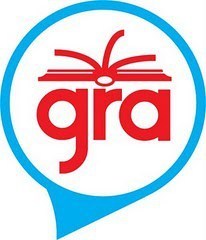
In June 2020, I wrote a post saying that perhaps 2020 would be the last year. for the GRA That after 11 years, perhaps it was time to say goodbye, end on a high note, move on to other things. Mired by the pressures of the world, bogged down by the usual emails and comments disparaging the choices of books, overwhelmed by the world, that decision felt like the right decision at that time. In June, 2020, I could not have imagined how I would feel now in February 2021, in a world that still feels extraordinarily heavy. That is still moving at a very slow pace as we look for small glimpses of hope in the form of a vaccine, in the form of brief moments of togetherness that has eluded us for so long.
And so as I sat across from my husband last night, celebrating our 16th wedding anniversary at home pretending to be at our favorite restaurant, he brought up research that is being done right now on the power of hope and having things to look forward to. That for the first time in a long time researchers are noticing that people are not planning for things in the long-term because COVID has bogged us down for so long. That we are not planning trips, we are not making plans in the future and that they wonder what not having things to look forward to will do to us as human beings. And it made me think once again about the power of the GRA. About the many emails, comments, and reach outs I received after announcing that 2020 might be the last year. How some of you told me that it was the one constant in your year, that it was one of the biggest things that you looked forward to, that there had to be some way to keep it going. And you kept telling me, periodically an email would show up asking if I had made a decision, would I reconsider? And I had been thinking of it, after all, due to COVID teaching I didn’t even get to do it with my own students this year, it felt unfinished in some ways.
And so last night I made the decision that I have been pulled toward for a long time. The Global Read Aloud will be back, albeit a bit more streamlined, but it will happen in 2021. I feel a bit like a flake, like I played with a lot of people’s emotions, but in June it didn’t feel possible, now it does. And I hope you can forgive me for that.
So a few changes you may notice for this year are:There will be no sign up, just join the Facebook community or stay tuned to this website for updates. That way I don’t have to send out emails all of the time to all of the new sign ups.There will be no voting. Having contenders meant a lot of people got mad when they didn’t feel the right book was selected, so this way it should feel more streamlined; if you don’t like the choice, simple, don’t do the GRA this year.What is information you may want right now?Kick off will be October 4th and the project will run for six weeks as usual, ending on November 12th.The official hashtag for the year is #GRA21, other hashtags will be announced once the books are.Books will be announced end of March, beginning of April.I will continue to try to find books that speak to a broader world experience, whether set somewhere outside of the US or with a broader global appeal, I am still looking for suggestions, so please consider nominating books hereI hope you consider joining me again as we continue to connect around the world, as we continue to create larger conversations centered in understanding, in acceptance, in empathy. I am excited for another year of reading together, I hope you are as well. If you have other ideas or questions please leave them in the comments.
Stay safe,
Pernille
February 4, 2021
Disrupting Our Assumptions About Our Own Failures

I have been thinking about how hard we can be on ourselves. The constant negative self-talk we, as educators, can quickly sink into due to the supposed reactions of children we teach. How we can spiral so easily into defeatist thinking. Into thinking we would be better off quitting, or surely, everyone else is doing a much better job at teaching than we are. That has led us to question the path we felt so sure of before a global pandemic hit.
It’s easy right now to fall into this trap. After all, with pandemic teaching many of us have grieved the loss of normal human proximity to our students. Unsure of how to connect through a screen, a camera that is turned off, a silent chat, a muted microphone, or a face covered by a mask, 6 feet away. Unsure of our safety as we crave normalcy in a world that is anything but. And yet we have risen to the occasion, isn’t that what we always do, tirelessly inventing ways to engage, reinventing the ways that used to work, we have reached out, we have shared ideas, we have searched for pieces we can bring in in order for us to feel a bit more effective. And yet, the weight of defeat has also been crushing at times.
When that learning experience we worked so hard on falls flat. Again.
When more kids turn their camera off. Again.
When the emails we send offering our support remain unanswered. Again.
When rather than engage we are met with shrugs. Again.
When the space for discussion remains silent. Again.
When COVID robs us of one-on-one conferring, small group work, or huddled together learning opportunities.
We carry our defeats in the back of our minds, the assumptions of perhaps how much we have failed, how terrible we are at teaching this year, death by a thousand cuts.
Because what has shifted in Covid teaching is one of the biggest tools we rely on; the small body cues that shift our direction, the facial expressions, and the feel of the room. The small signs that tell us to change, to go a certain way and not another, that allows us to read the energy and transform our teaching on the spot. When met with silence and blank screens or stares it is hard to know which direction to change to.
It doesn’t have to be lost though, it just needs to be transformed. I write this blog post to remind myself of tools I already use, that give me the answers I have been searching. Because my teaching life has been riddled with assumptions, and often negative ones of my own success this year, despite the evidence to the opposite. Perhaps yours has too?
So suppose we remember to ask instead of assume.
Suppose we take a moment and create a survey asking how we can grow and be better. What is working? What is not? What do you need from me?
Suppose we do it after every unit or even once a week. Suppose we believe that survey rather than our negative self-talk.
After all, all of the assumptions we make are more than likely not accurate.
I have been doing so on a regular basis, nothing new in my practices, after all, centering the needs of students based on their individual reactions is what I have been pursuing for years. Centering the identity of each child as they take control of their learning is the work I have been sharing for a long time.
And yet, my practices got lost this year. I forgot to ask as often as I should have. And I didn’t believe the results when they came in, assuming (there it is again) that kids were just being nice because they saw how hard I was trying.
Yet, if I look at the survey responses, the path forward is right there. The answers I haven’t been able to see as easily because I haven’t been in the room with my students for 330 days.
The questions have been simple. What is working? What is not? How can we make this experience better for you? What do you wish I knew? And then ideas to see whether we should change course. Offer up opportunities to do group or solo learning. Keeping a “Anything else you want to tell me option” just in case.
The answers have been straightforward, “I like our unit…No need to change anything…I’m having fun…” Ideas have also been shared, “Can we work together….can we have more work time….can we split into groups?” All statements I would not have thought possible if I believed my own assumptions.
And they have bolstered our path. I have tweaked and changed the way I teach based not on facial cues which easily get lost in virtual teaching or behind a mask but rather in the words they share. I have asked for their feedback when we are together and we have changed course mid-morning. I have put voice to the questions that run through my mind where I would normally find the answers in their behaviors rather than needing an explicit conversation about it.
And so I wanted to share the importance of asking once again. Because perhaps, like me, you had forgotten the power of a simple survey. Of relying on students to guide us when we feel we are teaching blindly. On looking at all of the cues that we can receive from other ways than those we traditionally rely on. There are many questions you can ask, I recommend starting with those that you have made the strongest assumptions about, such as whether kids care about what they are learning, how to change your teaching, why they choose to not share in some way in class.
Then believe their answers. Learn from them. Take the positive as the boost you may need, and the negative or neutral as ideas to move forward. Repeat as needed.
We can think we know all of the ways we are failing as teachers, all of the ways we are not good enough. Or we can ask. Base our answers on actual reality. Engage students in our planning, our tweaking, in the shaping of our learning community much like we always should be doing.
After all, kids are experts too, we just need to remember that.
I am excited to be heading out on the road again to be with other educators in-district or at conferences, while continuing my virtual consulting and speaking as well. If you would like me to be a part of your professional development, please reach out. I am here to help.
January 20, 2021
Teaching Inauguration Poetry
We have been sinking into poetry the last few weeks, discovering found word poetry and trying to decide what poetry really is. We have read and listened to poetry. We have created black out poetry, book spine poetry, traffic sign poetry, song lyric poetry, terrible love poetry and now we sink into inauguration poetry.
We will sit in the beautiful words of Amanda Gorman from the poem she recied today “The Hill We Climb” and we will use it to start analyzing poetry in discussion groups, seeing what impacts us, what brings the words power, what makes them more than just a gathered collection of thoughts.
I know many others are also looking for ideas for how to bring this historical moment into their classrooms so I share my lesson slides for tomorrow in order for others to maybe use and make their own. There are two versions here, one focused on Amanda Gorman (note: at the time of this share her poem’s text has not been released so I am working off a transcript), one focused on Richard Blanco that I made before today.



